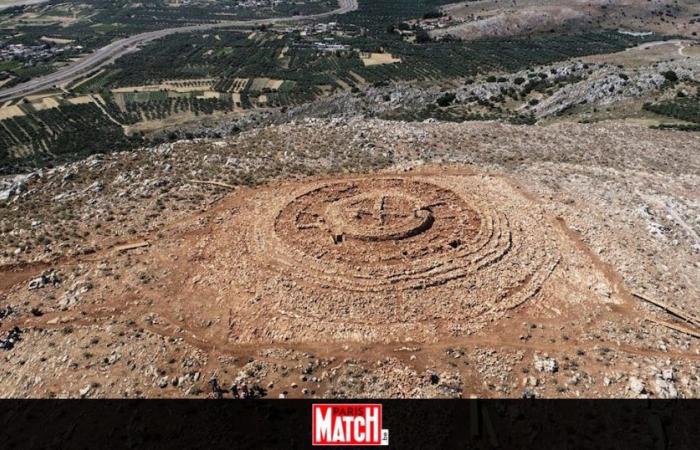The construction of a new airport in Crete has led to an exceptional archaeological discovery. Indeed, a mysterious circular structure was exposed to light on the construction site, in Kastelli on Papoura hill. The stone ruins measure 48 meters in diameter, extend over approximately 1,800 square meters and are made up of eight “almost labyrinthine” rings, connected by small openings.
A discovery which directly brings to mind Greek mythology and the famous labyrinth of the Minotaur, this half-man, half-bull creature locked by King Minos (the son of Zeus) in a labyrinth so that its existence remains hidden. But it is unlikely that the discovery made on the Greek island corresponds to the Minotaur’s labyrinth, first of all because the construction where the Minotaur lived, as it is described in the myth, probably never existed as is. Indeed, the labyrinth referred to in the story of the half-man, half-bull creature could only be a pictorial description of the Minoan palace of Knossos, which had a large number of rooms, staircases and corridors, which which made it labyrinthine.
More than 900 Ming Dynasty artifacts found in South China Sea (PHOTOS)
Following the discovery of the mysterious ruins at Kastelli, construction work on the airport was halted to allow archaeologists to excavate the site. According to initial research relayed by the Greek Ministry of Culture, the site discovered dates from the Minoan civilization and was active more than 3,700 years ago. It was “probably” used for religious rituals.






